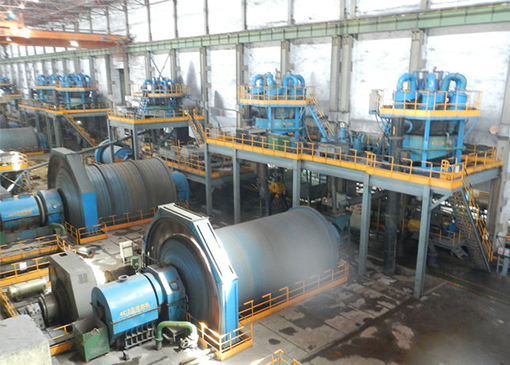- +8618937185591
- +8618937185591
- ec19@zkcorp.com
- +8618937185591

At present, there are roughly three treatment processes for nickel oxide ore in the world, namely, a combination of a fire process, a wet process, and a fire-wet process.

At present, there are roughly threetreatment processes for nickel oxide ore in the world, namely, a combination ofa fire process, a wet process, and a fire-wet process. The fire process canalso be divided into a process of reducing smelting production of ferronickeland a process of reducing nickel smelting by reduction smelting according tothe products produced; the wet process can be divided into an ammonia leachingprocess and an acid leaching process according to the leaching solution. Thecombination of fire and wet process refers to a process in which a nickel oxideore is subjected to reduction roasting to select a useful product by abeneficiation method.
First, the fire process
(1) Reduction of smelting production offerronickel
The most used in the world of firetreatment processes is reduction smelting to produce ferronickel. At present,at least 14 plants use reduced smelting to treat nickel oxide ore to produceferronickel. The annual output of nickel-iron (including nickel) is about250,000 tons, most of which are smelted in electric furnaces. Only a fewsmaller factories are smelted in blast furnaces.
The process of producing ferronickel byelectric furnace is suitable for treating various types of nickel oxide ore.The production scale can be determined according to the supply of raw materialsand the storage capacity of ore. It can be large or small, and the particlesize of the furnace charge is not strict. Requirements, powder and largerblocks can be processed directly. The only disadvantage of electric furnacesmelting to produce ferronickel is the high energy consumption.
The advantage of blast furnace smelting toproduce ferronickel is that it has low investment and low energy consumption,and is suitable for areas with small production scale, difficulty in powersupply, and low nickel content in nickel oxide ore. Its shortcomings are pooradaptability to ore, stricter requirements on magnesium content, and theinability to handle fine ore, and strict into the furnace charge.
(2) Reduction of sulfurized smelting toproduce nickel bismuth
The process of reducing nickel sulfideproduced by smelting and smelting nickel oxide ore is the earliest treatment ofnickel oxide ore. It was applied in the 1920s and 1930s, and it was blastfurnace smelting. This process has the same disadvantages as the process ofsmelting reduction smelting to produce ferronickel. Large-scale factories builtafter the 1970s have adopted the technology of electric furnace smelting totreat nickel oxides from nickel oxide ore. Currently, several of the largestplants with an annual output of more than 40,000 tons of nickel are inIndonesia and New Caledonia. The amount of nickel produced by nickel oxide orein the world is about 120,000 tons.
The vulcanizing agent for reducingsulfurized smelting is available in the form of pyrite, gypsum, sulfur andsulfur-containing nickel raw materials. The advantage of using sulfur as avulcanizing agent is that it is simple and easy, and does not have a negativeimpact on the smelting process (ie, does not affect the slag composition, doesnot affect the processing capacity, does not increase the power consumption),but it is more expensive, and the effective utilization rate of sulfur is notHigh, and there must be a set of facilities for sulfur melting and conveyingspray. Sulfur is used as a vulcanizing agent in factories in Indonesia and NewCaledonia, which are owned by International Nickel Corporation (INCO). Afterthe sulfur is melted, it is controlled to be sprayed on the calcined roastingin the rotary kiln at a certain temperature to convert iron and nickel intosulfides, and then sent to an electric furnace for smelting to produce lownickel niobium. It is said that the source of its sulfur is natural sulfur inthe crater, and its price is lower.
The process of producing nickel rutheniumby reductive smelting treatment of nickel oxide ore, the product of which hashigh flexibility of nickel bismuth: nickel oxide after desulfurization bycalcination can be directly reduced and smelted to produce universal nickel forstainless steel industry; Nickel pellets and nickel powder are produced by thecarbonyl-refined nickel raw material; since the high nickel niobium does notcontain copper, it can be directly cast into an anode plate to send nickelsulfide electrolytic refining factory to produce cathode nickel. In short, itcan be further processed to produce various forms of nickel products and torecover cobalt therefrom.